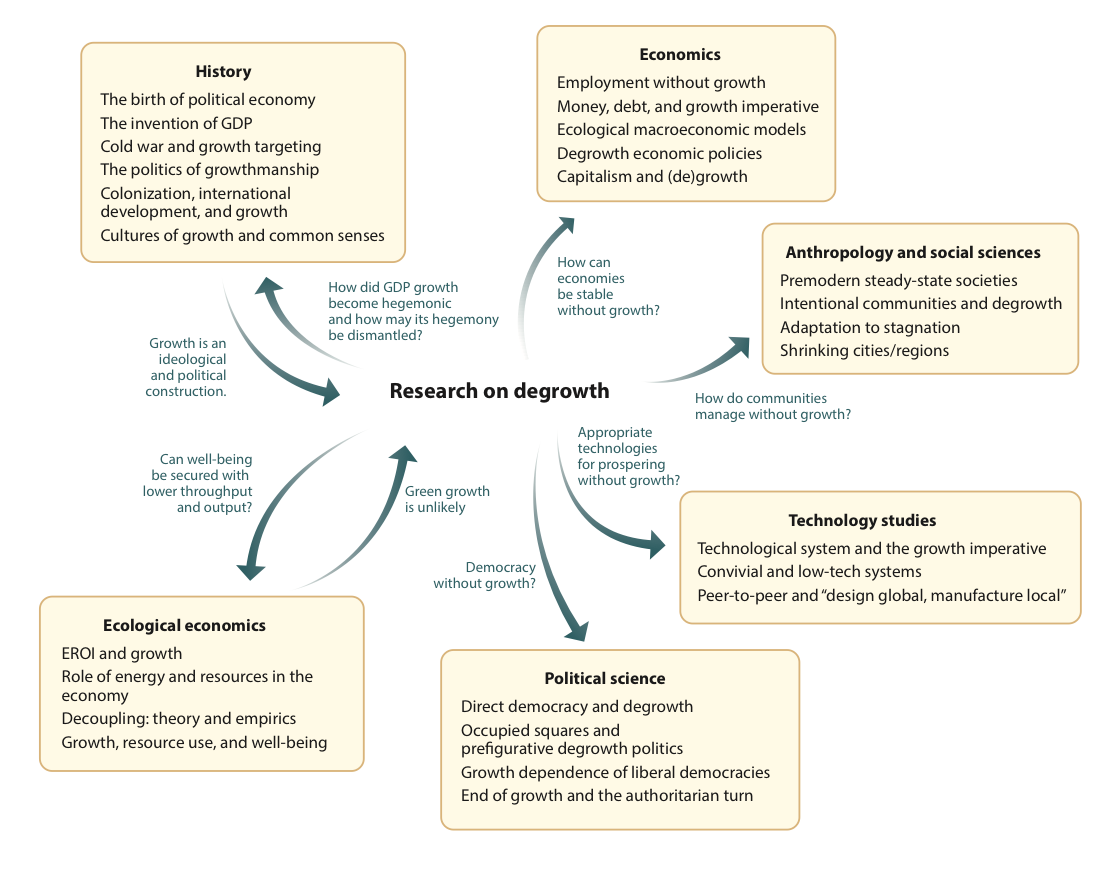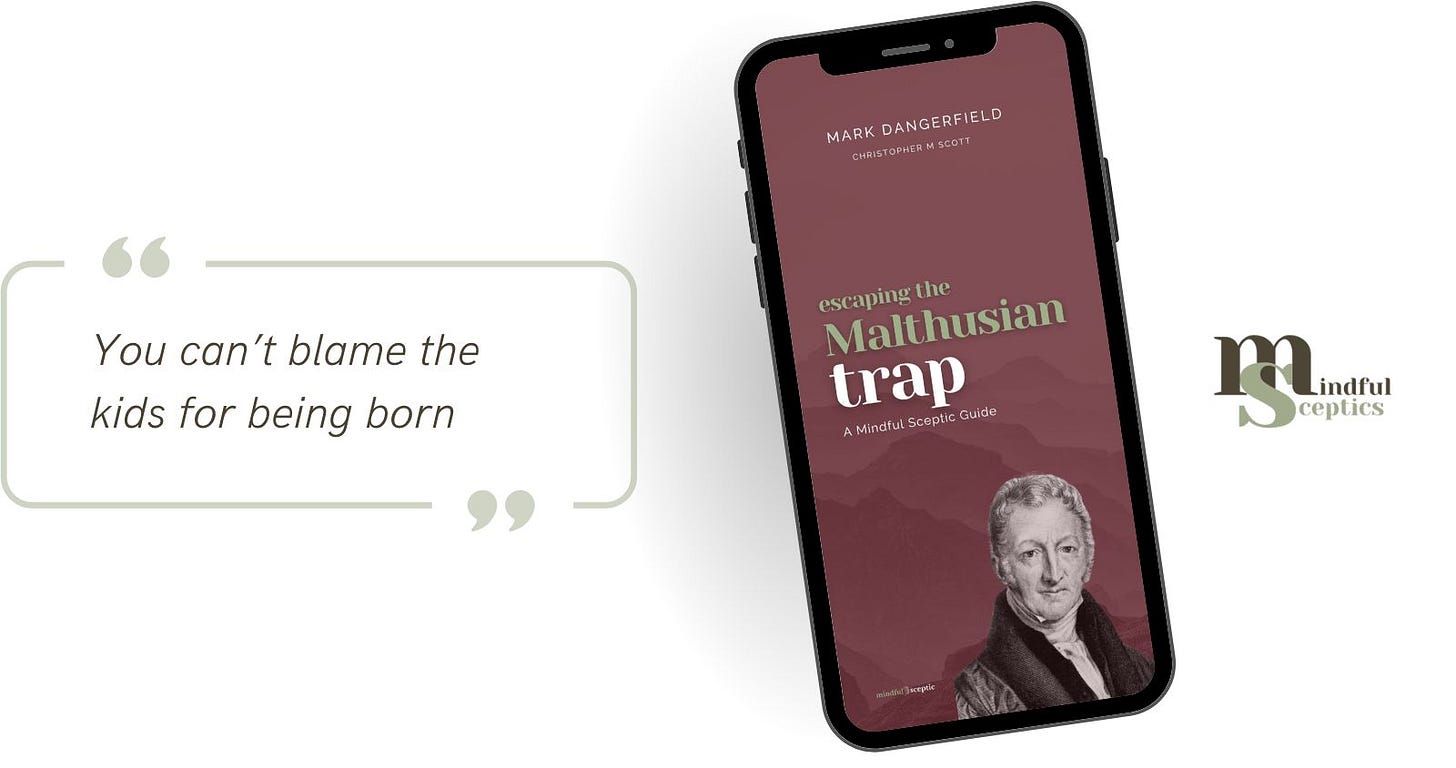Degrowth because the planet is finite
Why Growth Cannot Last Forever And What To Do About It
Growth is what we are sold as the only way to improve our lives. Here I blaspheme with two additional letters.
Remember that brain-stretching moment in math class when you first encountered exponential growth?
Perhaps it was compound interest or population dynamics that made your head spin.
This week, I've got a deceptively simple puzzle about lily pads that will not only revive that cognitive buzz but might transform how you think about humanity's future on our finite planet.
Let's start with a pond, a frog, and some lily pads. I promise this is going somewhere surprising...
A brain teaser
The Lily Pad Puzzle is a gentle brain teaser to help understand the concept of exponential growth.
Imagine a small pond with clear, blue water reflecting the summer sky.
In the centre of the pond are two lily pads, the emergent leaves of an aquatic plant, floating safely on the surface of the water, curled up edges keeping the surface of the leaf dry.
On one pad is a green frog.
The frog is hard to pick out on the green of the leaf, but a yellow stripe on its back gives it away.
By chance, a week later, you pass by the same pond and stop to admire the scene. Sure enough, the frog is still there, only you notice that there are now four lily pads; the number of leaves has doubled.
In a week, the frog has gained surface real estate.
A week later, you happen to pass by the pond again, and even before you spot the frog, you see that there are now eight lily pads. These aquatic plants are quite prolific.
You have to go away for a while and forget the frog and his growing number of lily pads. A few months pass. Delighted to return home, you saunter by the pond again. The first thing you see is that the pond is now mostly green as half of it is covered with the flat leaves, and somewhat less of the blue sky is reflected in the water.
Sure enough, the frog is still sitting proudly in the middle.
The puzzle question is this.
How many more weeks until the pond is completely covered with lily pads and the frog can hop to shore without getting wet?
The lily pad puzzle answer is…
One week.
When the pond is half-covered with lily pads and they are doubling in size every week, the pond will go from being half-covered to totally covered in just one week.
It is the reality of doubling.
When Growth Sneaks Up On You
This is what exponential growth does; it sneaks up on you.
Many weeks pass when there is plenty of pond without leaves, allowing sunlight to shine through the water column, bathing the algae with light and the pond's critters with warmth. Blink, and there is no open water at all.
After some thought, most people will get the answer to the puzzle.
What the puzzle does not ask is what happens next.
The open-water resource—space for lilies to grow into—was used up entirely in the last week. There is no more space for new leaves, so there are no new leaves. Growth in lilies stops because the resource is finite. There is only so much pond surface for the leaves to grow into.
Nature is clever; the lilies already on the pond will capture the sunlight and convert it into pollinated flowers, setting seeds.
These seeds are light and float away on the water, sink to the bottom and lodge in the mud. They germinate when there is some sunlight above them.
In other words, the lily waits for the next opportunity to grow more lilies.
Eight Billion and Counting
Perhaps humans could do something similar.
We could exhaust all the resources on Earth, following the economic paradigm of growth, until the planet is overrun with people, their machines, and their pets. Then sit back and wait for the next opportunity. Wait for new resources to appear or the old ones to be replenished.
But, of course, we cannot do this.
Unlike a seed, we cannot lie dormant in the mud. And unlike the lily, we cannot make our growth from simply basking in the sun.
As mammals, we must eat and drink to survive. We need a functioning ecology to meet our basic metabolic needs.
And then we could wait for how long? A generation, two perhaps.
If we waited for more oil to be formed in the Earth’s crust, we would be asking for millions of years of waiting time (except that we have already appropriated the biomass that could be laid down and compressed) or perhaps a few hundred years for healthy soil to reform.
Let’s not insult our intelligence any further… the planet is finite, and so are its critical resources.
As of 2017, the global annual population growth rate was 1.053%. That means the human population on Earth would double from 7.4 billion in 66 years. There would be 14.8 billion people by 2083, assuming the growth rate remains at 1.053%.
It will not, so the realistic doubling time is much longer, even if we do double at all.
Our ecology and the ecology of nature that support our primary metabolism and economic systems cannot continue to double because there is a limit. I know this is hard to accept after decades of teachers, politicians, and the media telling us that wealth is our right, and we can have it if we work hard and make plenty of Tic-Tok videos.
However, our planet has become crowded and small due to the global human population explosion.
Brave souls are tempted to ask, How big is the Earth?
Is the current population, over 8 billion in 2025, the equivalent of half a pond full of lily pads?
Most research indicates that we are already overfull. The Earth is nowhere near big enough or resource-rich enough to support 8 billion people to live materially like kings. We have already busted several planetary boundaries and annually use up the yearly supply of renewable resources in six months or less.
The way the global John Doe lives, the planet might be able to support 3 billion people, probably 2 billion.
On some of the boundaries, the pond is covered already.
Explore this research for an accessible discussion on the boundary issue.
Rockström, J., Edenhofer, O., Gaertner, J., & DeClerck, F. (2020). Planet-proofing the global food system. Nature Food, 1(1), 3-5.
The obvious solution to this overcrowding issue is to stop growing. Yes, there it is; I said it—the anathema of modern economics. Stop growing in numbers and stop growing in the current paradigm of resource use for wealth creation.
And if that wasn’t scary enough to the debt-ridden Western economies that must grow to pretend to meet the repayments, how about contracting?
How about globally, we use less?
Enter degrowth.
Swimming Instead of Hopping
I am not the first to suggest this; far from it.
Researchers, thinkers and futurists have been contemplating such a scenario for years. They even have a science sub-discipline, Ecological Economics, to provide the theory and empirical evidence.
Research on the history of ideas in ecological economics provides the two foundational concepts of degrowth…
That growth is an ideological construction and that growth is ecologically unsustainable.
Here is a summary of the influences on degrowth research, drawing on history, economics, society, politics, technology, and ecological economics.

Because there is a fundamental link between economic activity and resource use, any meaningful environmental or climate protection policies will slow the economy. A slower economy will consume fewer resources as part of a transition towards equitable well-being and environmental sustainability, meaning degrowth is not an end in itself.
Degrowth is defined by ecological economists as an equitable downscaling of throughput, with a concomitant securing of wellbeing.
I encourage you to read about this concept and consider the ideas presented by the many thinkers and researchers who are exploring these options.
In the Lily Pad puzzle, the frog hops across the pads to dry land without getting his feet wet. But frogs swim and don’t need to wait for lilies to cover the pond.
Humans swim, too; metaphorically, we are brilliant at it.
Our technological capabilities are as legendary as our drive, passion and will to succeed.
The purpose of this tease about degrowth is to introduce it as an alternative idea, a possible scenario different to the one sold to us since we were in nappies.
Now we need to examine degrowth as a solution. Does it stack up? Can it be achieved? What are the consequences of such a radical scenario?
Please give it some thought. You will be surprised how quickly you see the challenge and start to come up with answers.
Also, please spare a thought for how we have been sold the idea that growth is the only paradigm for humanity.
It isn’t or, at least, doesn’t have to be.
Mindful Momentum
The Receipt Challenge
Keep every receipt for a week. Each evening, sort your purchases into "needs" versus "growth habits", those items you bought because they're genuinely necessary versus those driven by the growth mindset (newer, bigger, more).
Don't judge, just notice.
At week's end, calculate the ratio and reflect on which purchases truly enhanced your well-being. This simple practice reveals how deeply growth thinking shapes our daily choices while building awareness for more mindful consumption.
Or perhaps try this one…
The Three Generations Conversation
Schedule a chat (in person or virtually) with someone two generations apart from you —grandparent/grandchild, senior mentor/student, etc.
Ask them about three things…
What defined "enough" in their era
How consumption patterns have changed
What they believe is essential for a good life.
Take notes. This cross-generational perspective reveals how our growth expectations have evolved over time and often yields surprising insights into the balance between contentment and consumption.
Key points
The Lily Pad Puzzle serves as an elegant metaphor for understanding exponential growth, illustrating how doubling sequences can accelerate from seemingly insignificant to system-dominating in a remarkably short time. This simple story of a frog, some lily pads, and a pond becomes a powerful teaching tool for grasping the nature of growth in complex systems.
Nature demonstrates both the power and limits of growth through elegant solutions, like the lily's ability to produce dormant seeds when resources are scarce. However, human societies face a fundamentally different challenge - we can't simply wait out resource constraints because our basic metabolic needs require continuous support from functioning ecosystems.
Current evidence suggests humanity is pressing against or exceeding several planetary boundaries, with our population of 8 billion increasing by 8,000 people per hour. Research indicates the Earth might sustainably support 2-3 billion people at current Western consumption levels, highlighting the pressing need to rethink our approach to growth and resource use.
Degrowth emerges as a powerful alternative to endless expansion, suggesting we can maintain and even improve well-being while reducing our throughput of energy and resources. This concept, grounded in ecological economics, offers a pathway that acknowledges both human ingenuity and planetary limits, inviting us to reimagine prosperity without continuous growth.
You Might Also Like
Curiosity Corner
This issue of the newsletter is all about…
Through the lens of a frog on a lily pad, we discover how exponential growth sneaks up on systems - from garden ponds to global economies - and why the courage to question this pattern might be humanity's most vital skill.
5 Better Questions from this issue of the newsletter…
How long until our pond is full? This reframes abstract discussions about sustainability into a tangible, personal timeline that invites immediate engagement with resource limits.
What happens after the last lily pad? A more insightful question than simply asking about growth rates, this pushes us to consider systemic consequences and forces us to confront the reality of finite resources.
If growth isn't the answer, what is the right question? This meta-question challenges our deepest assumptions about progress and prosperity, opening space for reimagining what truly matters in human development.
Why do we treat infinite growth as natural when nature itself doesn't work that way? A deeper question that exposes the contradiction between our economic models and ecological reality, inviting critical examination of our fundamental assumptions.
How can we thrive without getting bigger? Rather than asking how to maintain growth, this question redirects our innovative capacity toward finding solutions that don't depend on expansion - exactly what a mindful sceptic should explore.
These questions are better because they move beyond the obvious critiques of growth to explore underlying patterns and possibilities. Just as I learned from those lily pads in my early research days, sometimes the most powerful insights come from asking not just what we're seeing, but what it means for our future.
Each question invites both critical analysis and imaginative thinking.
In the next Issue
Remember when your science textbook was the single source of truth?
Times have changed. I've spent forty years watching scientific knowledge explode from manageable to mind-boggling. Next week, I'll take you behind the scenes of modern science teaching, where teachers are overwhelmed by research papers while AI promises a rescue.
But maybe we've been thinking about this all wrong.
I'll show you why teaching kids to think like scientists might matter more than knowing every discovery.
If you would like to learn more about human population growth and its implications, we have a comprehensive guide available…
If the book is a bit much, you could always…









Paul Ehrlich, "The population bomb" (1968). We were warned (also about CO2 emissions/climate by Hansen at about the same time). No excuses.